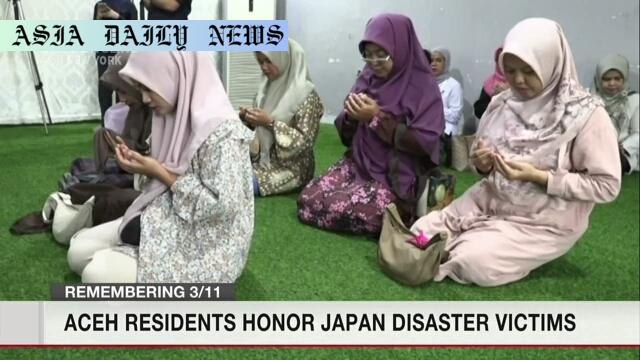Tsunami Tribute – People in Indonesia’s Aceh pay tribute to the victims of the earthquake and tsunami in northeastern Japan.
Tsunami Tribute unites Indonesia and Japan on disaster remembrance.
Aceh locals hold ceremony commemorating 2011 disaster victims.
Forty participants write messages, share lessons, and show solidarity.
Reinforces shared experiences of tragedies and importance of help.

Remembering Shared Loss and Tragedies
The province of Aceh in Indonesia stands as a vibrant testament to resilience and community, having faced its own devastating tragedy during the 2004 Indian Ocean tsunami that claimed over 160,000 lives in the region. Today, this province pays heartfelt homage to another tragedy: the 2011 earthquake and tsunami in northeastern Japan. On the 14th anniversary of this disaster, residents of Aceh came together to remember, mourn, and express solidarity with survivors, fostering a connection grounded in mutual experiences of loss and hope. This solemn event, held at a local orphanage near Banda Aceh and attended by over 40 individuals, underscores the enduring connection between these two communities displaced and reshaped by disaster.
The Strength of Connection and Meaningful Support
The participants at the ceremony included children from the orphanage and the Japanese consul-general, who collectively offered their respect by observing a moment of silence. A speech delivered by a local woman, who had lived in Japan during the 2011 crisis, further strengthened this occasion. Recounting her volunteer work in Miyagi Prefecture, she urged attendees to embrace the spirit of service, “If you can help, help even if it is small.” The wisdom shared by this simple act of volunteering continues to echo globally, encouraging societies to respond with humanity and selflessness during crises. These ceremonies are more than memorials—they uphold human values demonstrating the remarkable ways communities extend compassion across international borders.
Passing the Torch: Preserving Collective Memories
While honoring past tragedies, Aceh faces the challenge of educating younger generations about the disasters they were too young to witness. The event organizers emphasized the need to preserve these painful yet important memories. Messages written on children-made paper cranes for Japanese disaster victims reflected a brighter and unified future as one participant noted her message, “Japan with the people of Aceh.” These acts of remembrance and narrative sharing become vital for teaching resilience, preparedness, and understanding. By ensuring the transfer of these memories, Aceh demonstrates its commitment to using the past as a tool for better outcomes despite hardship.
As time moves forward, initiatives like these not only pay tribute to those lost but also symbolize the enduring collective strength formed between two regions forever shaped by oceanic tragedies.
Commentary
The Universal Strength Found in Shared Grief
The story of Aceh collaborating with northeastern Japan to honor victims of their respective disasters is nothing short of inspiring. It provides a heartfelt reminder that, despite borders and distances, human solidarity has the power to transcend differences, encouraging people to come together and help each other in times of peril. Whether it’s raising funds, providing resources, or simply writing a message of hope, these small acts of kindness often lead to profound impacts. Events like this serve as a powerful reminder of humanity’s connectedness amidst circumstances that underscore our vulnerabilities.
Lessons in Resilience and the Importance of Teaching the Future
A particularly striking aspect of the tribute ceremony is the importance paid towards educating younger generations. Ensuring histories and lessons of tragedies are passed down provides invaluable knowledge regarding disaster response and preparedness. It also fosters empathy, teaching upcoming generations about the value of global solidarity. However, this is no easy task. Communities around the world must find creative and culturally significant methods to preserve these memories, aligning them with the realities of modern education and communication trends.
Tiny Threads of Connection Create a Strong Tapestry
Lastly, the gesture of letter-writing on paper cranes by children serves as a symbol of hope and affection going beyond mere formalities. These interactions, though seemingly simple, create a tangible connection across thousands of miles between Indonesia and Japan. As these children grow into adults, these experiences may shape their character, encouraging them to extend empathy toward strangers facing hardship globally. Ultimately, such acts ensure that the human spirit grows ever stronger in its resolve against adversity.


